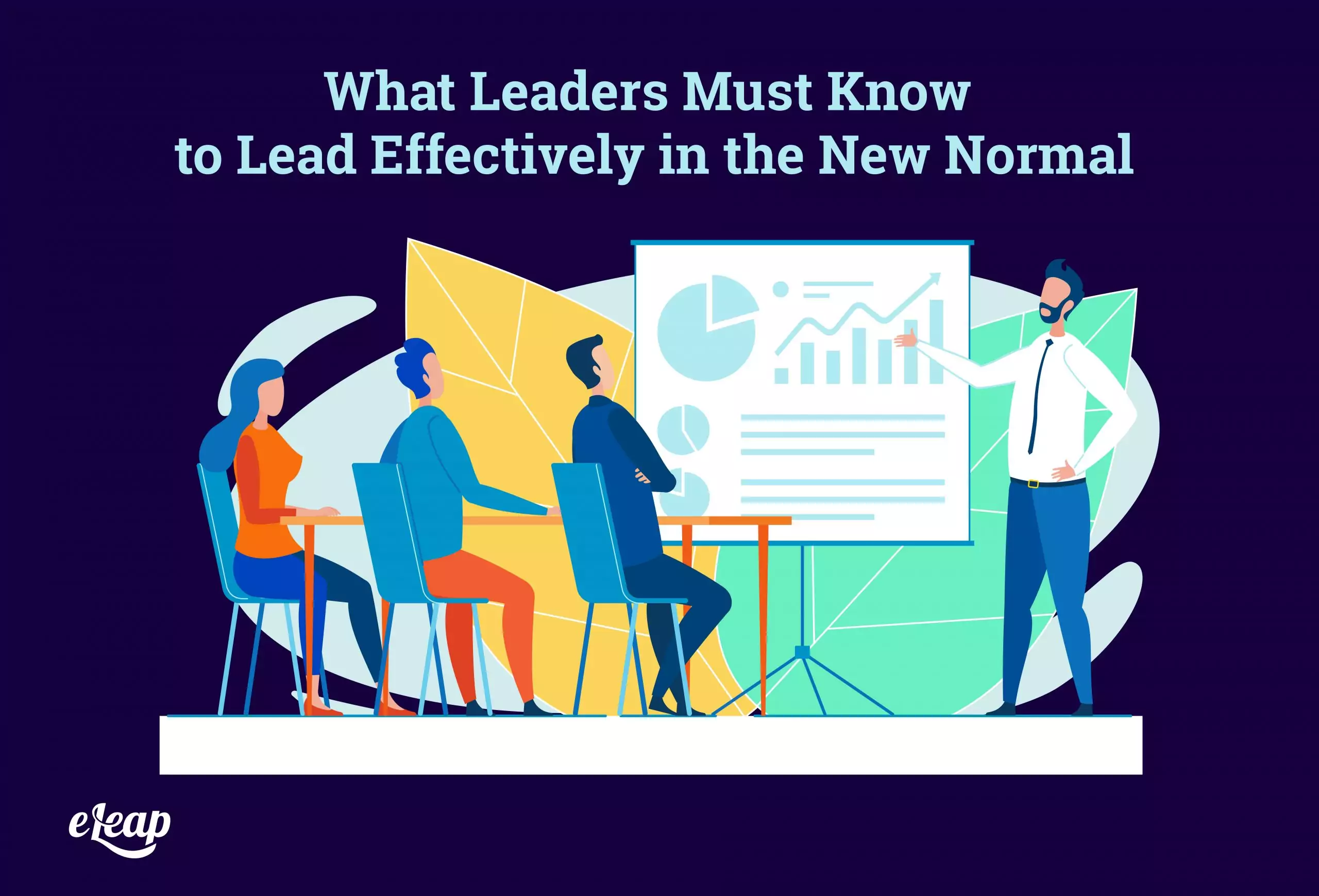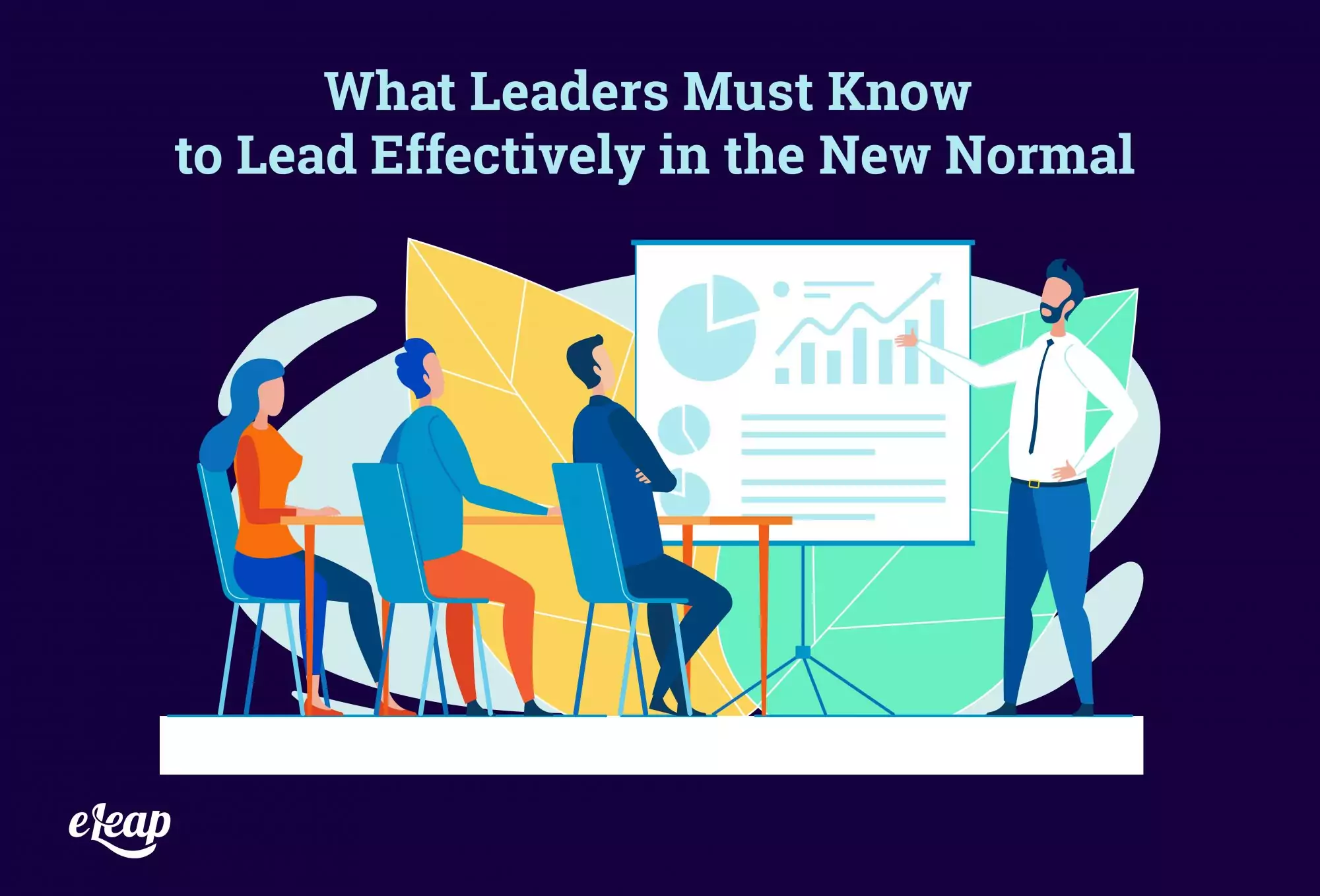What Leaders Must Know to Lead Effectively in the New Normal

For learning and development to succeed, everyone must be on board with the strategy. In addition, buy-in must extend to the highest levels. Of course, the new normal could be complicating efforts to achieve that buy-in.
Between the pandemic, political unrest, market instability, and other factors, leaders may be struggling to keep up. It can be challenging to keep your eye on the ball when it feels like capricious fate keeps moving it. The good news is that leaders can adapt to our new normal while simultaneously strengthening L&D initiatives. It just requires understanding a few things about our current (and future) situation.

Focus on Growth Mindset
First, leaders need to change their mindset. Too often, a fixed mindset is the norm. Here, scarcity is the rule, and change is undesirable.
Of course, we have little power over how the world evolves. To cope with that and the impact of change on the business, leaders must focus on developing a growth mindset. Here are a few key ways these mindsets diverge from one another:
Fixed Mindset:
- Threatened by others’ success
- Challenges should be avoided
- Resistance encourages giving up
- Effort is without value
- Feedback has no place
- Fixed abilities cannot change
- Wants to appear intelligent
Growth Mindset:
- Failure is part of the effort and valued
- Effort is necessary to achieve new things
- Abilities and skills can be developed over time
- The success of others is inspiring
- Feedback is valued and sought out
- Learning is the key to success and growth
Skills Are the New Currency
How organizations hire and promote talent is changing dramatically thanks to COVID-19, as well as other factors. Today, so-called soft skills, as well as technological skills, form the foundation on which potential new hires are evaluated. They are also key in evaluating in-house talent for promotion. In short, skills have become the new currency, and leaders must understand this.
Not only is there a seismic shift in how companies hire and promote, but there’s a fundamental evolution in our understanding of skill development. Once, employee value to the company was something of a fixed metric. Person A was hired with a specific skill set, which equated to a specific value, and then remained pretty static.
Today, that’s not the case. Learning and development initiatives mean that skills are not static and that companies can invest in their in-house talent, build new skills, advance their existing talent up the ladder, and then hire with a strategic eye toward filling specific roles and building new skill sets. It’s not just about closing the skill gap, though. It’s about creating a robust, resilient organization that can survive in today’s new normal.
Inclusivity Rules All
Creating a diverse workplace is a key goal for many leaders. However, that cannot occur without inclusivity, which can be a stumbling block. Inclusivity is vital for building a strong sense of connection and belonging within an organization (and within that organization’s customer or client base), but it becomes vital to overcoming deep divisions.
Inclusivity can only be achieved through strategic learning and development steps. It also requires buy-in from top levels to ensure that diversity is valued within the company’s culture. Through training and development courses, both leaders and other employees can learn the need for diversity and the role of inclusion in creating a culture of trust, diversity, and authenticity.
Learn to Practice Empathy
There’s been a lot of talk about empathy, but many leaders lack this key skill. While some people are born with the ability to put themselves into the shoes of others, many of us must learn to do so. That’s the good news – empathy can be learned, built, and developed. And when it is, an organization can create a culture of understanding and psychological safety. Without that type of culture, it becomes difficult, if not impossible, to grow and thrive in this new normal.
Prepare for VUCA
VUCA stands for volatility, uncertainty, complexity, and ambiguity. Those four terms certainly sum up most of 2020 and may play a role in 2021, as well. How can leadership prepare for seemingly nebulous yet negative threats to productivity and profitability?
One way is to design robust L&D initiatives. When employees have access to courses designed to help them improve professionally and personally, they feel valued, calmer, more engaged, and less uncertain. That bleeds over into the company as a whole. After all, the company is nothing more than the collective efforts of the employees, so if they can feel more certain, more valued, and more confident, it radically changes the fabric of the company’s culture.
Realize You’re Chasing Technology
If there is one thing that 2020 has driven home, it’s that technology is the enabler for virtually all businesses. Without video conferencing, email, productivity suites, and cloud-based learning management systems, most companies would have crumbled at the onslaught of COVID-19 lockdowns. However, technology continues to evolve and grow more and more rapidly.
Most organizations implement technology without fully understanding it and without providing employees with training. That can be detrimental in the long run. A “sink or swim” mentality shows a lack of empathy and concern, which can increase disengagement and encourage employees to defect to competitors.
However, by strategically deciding on technologies to include and then providing access to digital L&D material, leaders send the opposite message. Employees see that they are valued, that their success is the organization’s success, and that the company (and leadership itself) is willing to invest in their futures.
Building Robust Leaders
Like skills, leaders must be built, developed, and evolved over time. Leaders at all levels of the organization must understand that their growth, like that of their employees, is never done. With that first step, it becomes possible to really improve effectiveness in the face of our new normal. However, without that first step, an organization will forever be playing catch-up, lagging behind competitors, and unable to innovate and thrive.